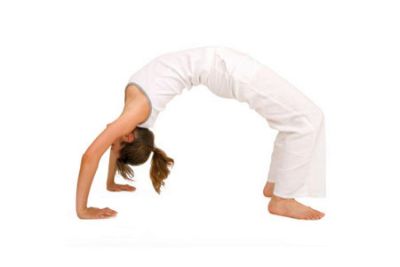Yoga for Back Pain Research came out this past week and the results were very interesting. According to the latest research, doing yoga daily is more effective in healing your chronic back pain than other conventional back pain treatments.
There are also more side effects as a result of using the conventional treatments, such as painkillers and muscle relaxants. You have probably heard of it in your social clique and fitness freaks are raving about it, but what is hot yoga anyway, and most importantly, why is it any different than the regular hatha yoga?
The brainchild of Bikram Choudhury, hot yoga also known as Bikram yoga is an improvisation on the traditional yoga form. The difference however lies in the condition in which it is practiced. As the name suggests hot yoga is mainly done in an extremely warm studio with temperature set around 105 degree Fahrenheit and the humidity too is raised.
Hot yoga has deeper effects as the change in temperature creates pressure, which in turn increases circulation in the body and stimulates every joint and muscle. Additionally, this also pushes the participants to put in more effort thus doubling the weight loss result as compared to traditional form.
Many of my new students often do not know what to expect in a Yoga class or have general misconceptions about Yoga. This is not surprising as Yoga is often misunderstood. At one extreme, it is a pure spiritual practice that can corrupt your existing religious beliefs. At the other extreme, it is a set of powerful exercises done in dance like moves. In between these extremes, you have everything from indulging in carnal pleasure to levitation.
To be honest, there is some truth in every version but as they say – half a truth is half a lie. It is important to have a general understanding of Yoga before attending a Yoga class. This is to ensure that your needs are aligned to what you can expect in a class. Nashville yoga classes provides you a best assistance in yoga for your healthy life
Yoga for Back Pain Research
The researchers closely monitored 228 adults who suffer from acute and chronic back pain problems. They were separated into three groups with two groups attending daily yoga sessions and the remaining group doing different exercises for a few weeks.
At the end of the program they discovered that 50% the participants who attended yoga sessions felt much better compared with only 20% of the other group.
Yoga is More than Meditation
 The Yoga for back Pain research forces us to look more deeply into what Yoga actually is. Yoga is not just a form of meditation as some people perceive it and the benefits are not just limited to strengthening muscles, improve flexibility and balance. Yoga is an extremely good therapy for relieving back pain, shorten recovery time, reduce swelling and increase blood circulation. Practising yoga daily will help improve your posture and keep your spine in proper alignment.
The Yoga for back Pain research forces us to look more deeply into what Yoga actually is. Yoga is not just a form of meditation as some people perceive it and the benefits are not just limited to strengthening muscles, improve flexibility and balance. Yoga is an extremely good therapy for relieving back pain, shorten recovery time, reduce swelling and increase blood circulation. Practising yoga daily will help improve your posture and keep your spine in proper alignment.
There are many forms and poses of yoga and not all can help your back condition. In fact some can even worsen it. It is best to attend classes under the guidance of certified yoga instructors as they can advise on what poses are suitable for you.
Back strengthening poses serve not only to strengthen your muscles around the spine, but also help to activate your kidneys and increase the energy in your body. Back releasing poses will help to reduce tension and muscle spasm and improve spinal mobility. These exercises will help to nourish your back muscles and muscle tissues, and are good for people suffering from lower back pain. Stretching other muscles in your body such as the hamstring and thigh will make them stronger and more flexible and lessen the amount of stress on your back. This will finally reduce the tension and relieve your back.
Easier Way to do Yoga
Performing poses on the floor are easier than standing poses as they require less strength and balance. One very important aspect of doing yoga is to learn how to breathe properly, especially when holding the poses. Choose poses with longer hold times (inhaling and exhaling) as they are easier to do.
When you master the art of deep and rhythmic breathing, your body will relax, freeing you of pain-inducing restrictions and eases proper circulation.
Do not eat at least one to two hours before you practise yoga and refrain from drinking too much water before the session.
You should practise yoga daily for an average of 30 minutes, depending on your schedule, objective and fitness level. It is better to practise more often with shorter duration than less often with longer duration as this will produce better result.
If you are seeking relief from back pain, yoga is certainly one of the best lower back pain exercises. Like all forms of exercises, do not push your body to the limits. If you still experience pain after doing yoga, stop and consult your doctor.




